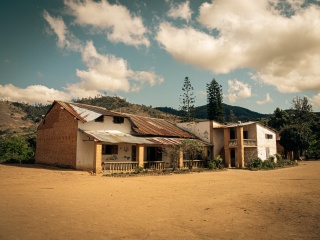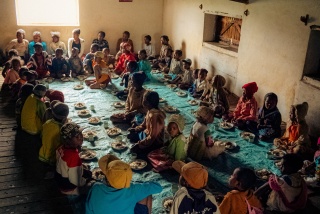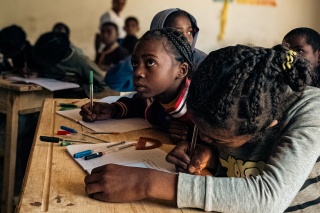
Madagascar – caught in a continuous poverty trap
Systemic failure of infrastructure and complete lack of investment means that most of Madagascar live in a self-perpetuating cycle of environmental destruction and poverty.
I was recently given the opportunity to visit Madagascar to collect content and document how Mary’s Meals delivers its school feeding programme in collaboration with our school-feeding partner, Feedback Madagascar.
Situated off the East coast of Africa, Madagascar is the fourth largest island in the world, with a population of over 32 million people. More than 39% of children under the age of five are affected by malnutrition and frequent climate disasters have devastating and long-lasting effects on Madagascan communities.
This article presents my own personal reflections of the trip – a glimpse into one of the poorest countries in the world.

A lack of investment and infrastructure
Our first view of the capital city Antananarivo began with a 14-hour drive on the dilapidated “main” road out towards a Mary’s Meals school feeding location.
Antananarivo is a sprawling urban jungle with a population of more than 4 million people. My first impression was of organised chaos, comparable to other cities I’d visited in countries who face similar economic challenges. But I was instantly shocked by the lack of any kind of visible wealth and complete systemic failure of infrastructure in Antananarivo.
Travelling further out of the city, we passed through villages and small towns that reinforced this sense of daily survival. The road was in a complete state of disrepair, the roadside structures run down and people constantly on the move to make a meagre living.

Scratching a living from the earth
The scale of Madagascar is breathtaking – in terms of both the environment and the problems it faces.
People work in rice fields or dig up the orange clay to make bricks in the searing heat using sticks and other basic manual tools.Children often work alongside their parents, missing out on an education due to the lack of money and opportunity. People survive day to day in conditions that are hard to comprehend – and the problems are profound across all regions we passed through.
All of this is set against one of the most spectacular backdrops I have ever seen. Madagascar is magnificent in its diversity and beauty, with vivid colours, deep valleys and soaring mountains. It has a unique ecosystem that provides a wealth of resources, with much of its natural environment not found anywhere else on the planet.

A cycle of destruction and poverty
Later in the trip, we met up with Jamie Spencer, CEO of Feedback Madagascar, who first travelled to Madagascar to study lemurs and help preserve their environment. After living in the country for a short period of time, he came to understand how the people are caught in a continuous poverty trap.
The main food source in Madagascar is rice. But to grow rice and other crops means cutting down large areas of the rainforest. After the harvest, the land is burned to provide fertiliser for the consecutive season. This “slash and burn” method causes depletion of nutrients in the earth and the soil can no longer retain water, leaving the landscape scarred, infertile and devoid of stability.
For the people to survive, more and more areas of rainforest need to be destroyed, cleared and planted – and the cycle of destruction and poverty perpetuates.

Mary’s Meals – a catalyst for change
Recognising this problem, Feedback Madagascar developed an approach to provide holistic support to the affected people across health, agroforestry, clean water, human rights and, importantly, education and school feeding.
Factoring in Mary’s Meals’ school feeding programme means that communities can send their children to school knowing they will get at least one nutritious meal a day. This enables parents to find more time to work and use the money they would have needed to feed their children on other essentials.
Collaborating with Mary’s Meals has been a catalyst for change for local communities, Jamie says. The way Mary's Meals are delivered with volunteer parents cooking and serving the food has inspired the community to work together with Feedback Madagascar on other projects such as building boreholes to source clean water and trying out new farming techniques to produce yams and sweet potatoes.
As Jamie says: “One of the greatest attributes about the Mary's Meals school feeding program is that it’s in it for the long run. The commitment and dedication to deliver school feeding every day until the problems are solved is more than money can buy.”
It costs just £19.15, €22, $25.20 USD or $31.70 CAD to provide a child with school meals for an entire school year. We currently serve daily meals to more than 88,500 children in primary schools, education centres and detention centres every school day. Your donation will help us reach more children in Madagascar – giving hope to the children and the communities they live in.
Alan Melrose is our Director of Marketing.
